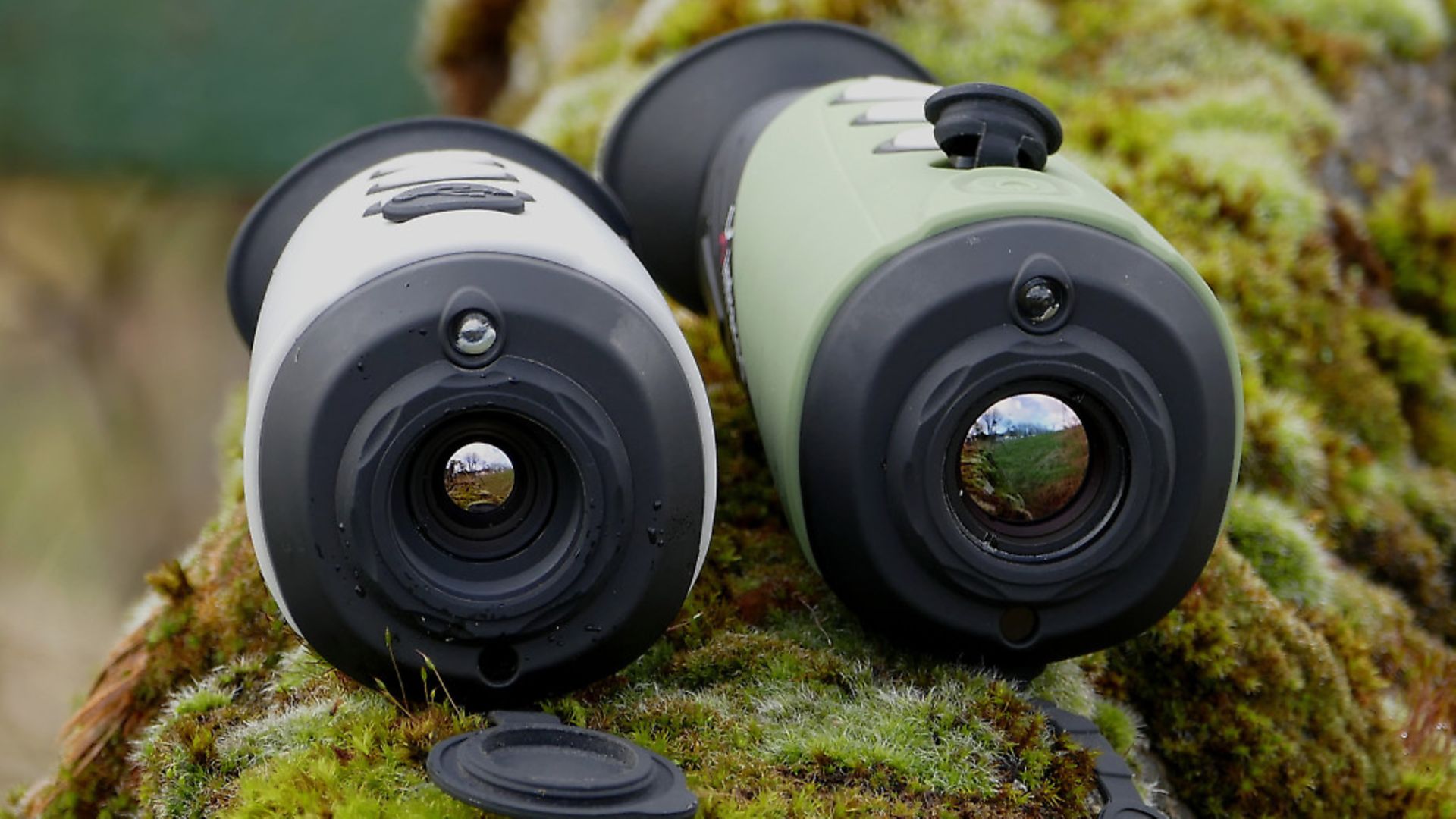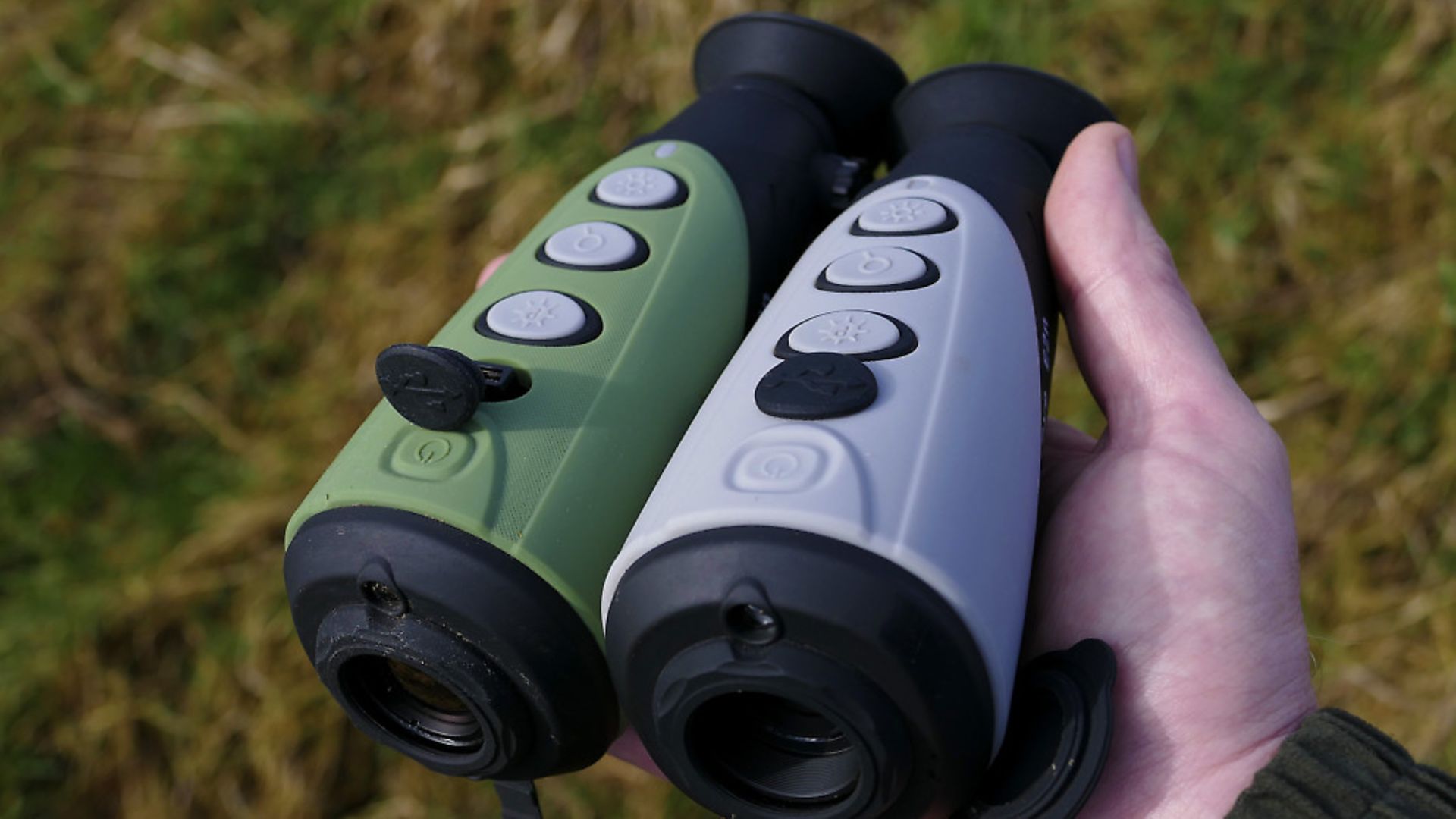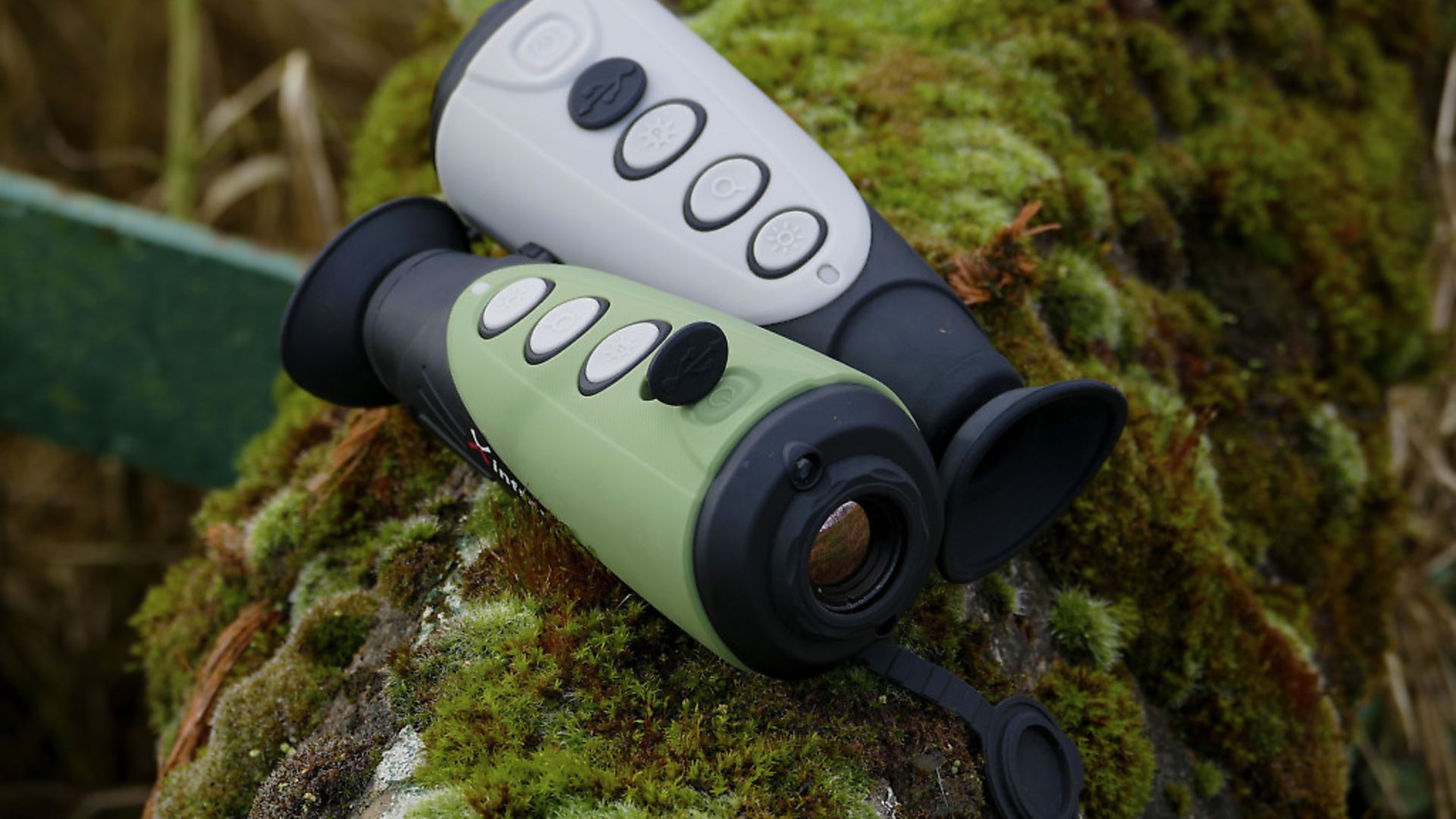Paul Austin takes a look at the IRay XEYE E2N and E3N thermal spotters side-by-side in this detailed test and review
 credit: Archant
credit: Archant
It’s a rare thing to have three brand-new thermals and a scope on test from the same manufacturer, but that’s exactly what we have, courtesy of Optical Solutions. It can be a tricky business reviewing any optic, or in this case thermals, in isolation. The mind can play tricks in terms of image quality when looking at a similar product when weeks or even months have passed.
Having products side by side is a huge bonus, so I plan to break from tradition and review the latest releases from IRay over two articles. We’ll start with an overview of image quality and the basic feature set of the two entry level units and go into more detail on the Xeye E3 Max, alongside the latest Siam SCL35 thermal riflescope, in the following article.
Having all these thermals side by side is perhaps a testament to the faith Optical Solutions have in the range, but two pages isn’t nearly enough to cover everything. So, we’ll explore the image quality and core functionality of the E2n/E3n to kick things off; hopefully what follows should give you a good idea which entry level IRay might be right for you.
 credit: Archant
credit: Archant
Xeye E2n & E3n
On the face of it, the Xeye E2n and E3n are identical, other than the grey colour scheme of the entry level model, as opposed to the green of its slightly higher spec sibling. Both have a rubberised grippy finish and a shape not dissimilar to that of the original handheld Flirs.
Ergonomically, they’re both excellent, and feel good in the hand with fingers falling naturally onto the three buttons that provide the primary controls, with a fourth button up the front for power and standby.
Aside from the colour, the only noticeable difference between the two is the larger lens of the more expensive model. Both feature a floppy rubber lens cap plus a soft eyepiece alongside a rubber bung concealing the USB charging port. Underneath, there’s a combined heat-sync and tripod mounting point. To the rear sits the ubiquitous diopter adjustment and that’s about it.
There’s no actual connection point for a lanyard, but it wouldn’t be too problematic to jerry rig something via the tripod mounting point or perhaps toward the ocular end just in front of the diapter adjustment. I must admit I would like to have seen a dedicated connection point for some form of strap, but it’s hardly a deal breaker with both units slipping easily into a pocket.
![[Alternative image for Iray5Final.jpg]](/resource/image/6310464/landscape_ratio16x9/1920/1080/d4e934a2d54fb1a40e4d4e08a655e272/sD/iray4final.jpg) credit: Archant
credit: Archant
Controls & functions
Both units offer a little party trick – you can turn them into an emergency touch while powered down, but it’s when the power is on that the fun really starts. Firing up both units only takes a couple of seconds. It was at this point I became genuinely shocked by the quality from both devices. They’re truly impressive for products at this price point.
As you’ll discover, both units are very simple in terms of functionality: no wifi connectivity, no video or any streaming shenanigans. You can tweak the image a little and select from a range of five colour palettes and that’s about it. What you’re getting is exceptional bang for your buck in terms of image quality.
The controls themselves couldn’t be simpler. Power on/off/standby, six levels of brightness, a zoom function, with base and 2x available on the E2n, while the E3n offers base mag, 2x and 4x. There’s an option to toggle between, while hot, black hot, a red accented white hot, the omnipresent (but nevertheless useless) predator style colour scheme and finally a high contrast white hot mode. A long press on the brightness button recalibrates the sensor. That’s it!
Both units are fixed focus, so you can’t twiddle with that, but the depth of field is so deep you don’t need to, with both resolving a sharp image from about 3.5m to infinity.
 credit: Archant
credit: Archant
Image quality
As mentioned earlier, I was, and still am, impressed by the image quality of both. The E3n does provide a sharper image and better detection at longer range but I wouldn’t hesitate to take the E2n out for an evening’s ratting, rabbiting or foxing. The image for both is impressive, smooth gradients with virtually no sparkle or break-up often associated with smaller sensors and older thermal units.
The E3n has the edge in terms of clarity, and IRay clearly know how to squeeze the very best from their hardware. In terms of base mag, I’d put them around 1x, which isn’t a bad thing. Thermal spotters are about detection and the more ground you can cover the more likely you are to spot something worth investigating. Both offer digital zoom with the E3n zoom being particularly good.
At first glance, there’s seems little to choose between the two, which is a testament to how good the E2n unit is, but the more you look the more the quality of the E3n shines through with the larger sensor/lens combo definitely adding a little more definition and clarity to an already smooth and well balanced image.
If you’re already struggling to justify the expense of a thermal, the E2n will definitely get the job done in terms detection, but I do feel that extra £200 for the larger sensor and lens of the E3n is well worth the extra investment. It’s a little clearer, a little sharper and has slightly longer legs when it comes to detection.
Simple they may be, but excellent image quality, great battery life and a 3-year warranty means the big names in the thermal business definitely have some competition on their hands.
Supplier: Optical Solutions
IRay Xeye E2n - Price: £999
IRay Xeye E3n - Price: £1,200
Model: E2n/E3n
Resolutionl: 240x180 / 384x288
Pixel sizel: 17um / 17um
Frame ratel: 50Hz / 50Hz
Lensl: 13mm / 19mm
FOVl: 17.8x13.4 / 19.5x14.7
Displayl: 720x540 / 720x540
E-Zooml: x2 / x2/x4
Batteryl: 15h / 15h
Weightl: 370g / 370g
Dimensionsl: 160mm x 62mm x 62mm / 160mm x 62mm x 62mm